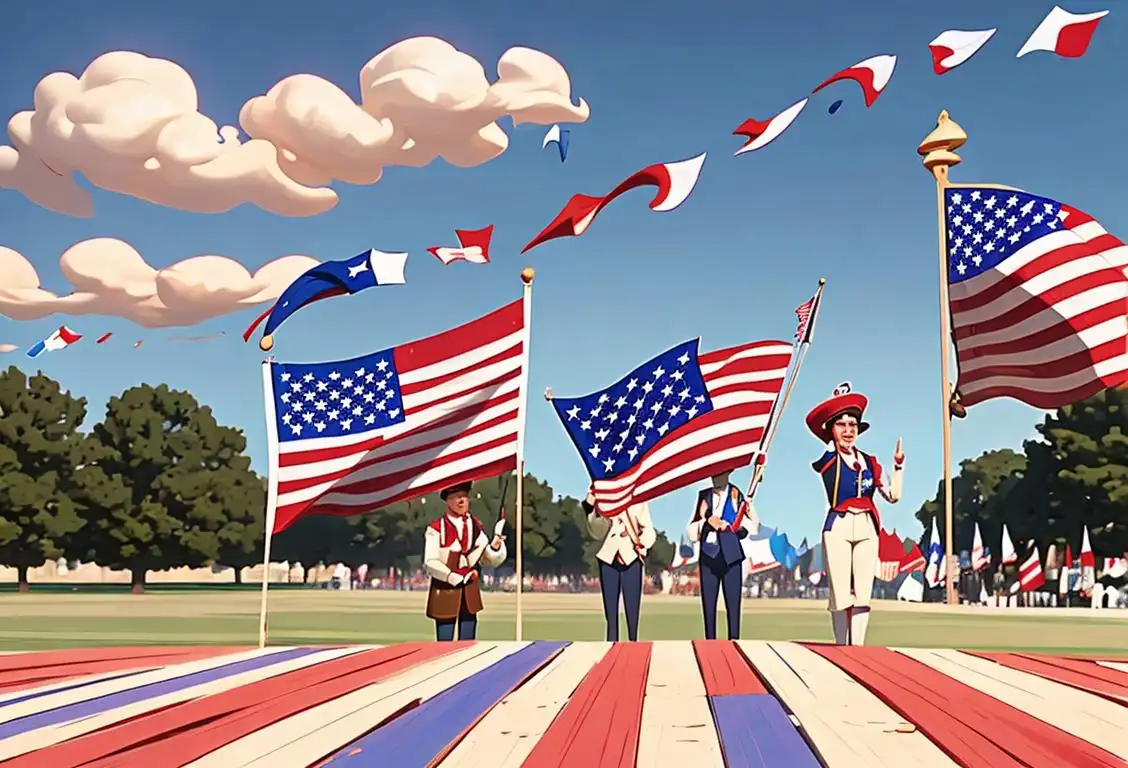National Exclamation Point Day

Greetings, exclamation lovers and punctuation enthusiasts! Get ready to express your excitement, astonishment, and enthusiasm because it's time to celebrate National Exclamation Point Day!
When is Exclamation Point Day?
It's national exclamation point day on the 13th March.
The Origins of the Exclamation Point
Before we dive into the history of National Exclamation Point Day, let's take a moment to appreciate this little mark of punctuation. The exclamation point, also known as an exclamation mark, is like a tiny superhero in the world of grammar. It adds that extra oomph to your sentences, conveying strong emotions and making your words shout from the rooftops!
The origins of the exclamation point can be traced back to ancient Greece and Rome. In Latin, the word 'Io' was used to express joy or triumph, and it was often written with an 'I' on top of an 'o.' Over time, this combination transformed into the exclamation point we know and love today.
Celebrating National Exclamation Point Day
Now, let's get to the fun part! National Exclamation Point Day is all about embracing the power of the exclamation point and using it to its fullest potential. Here are a few ways you can celebrate:
- Share your favorite exclamation-filled quotes or lines from books, movies, or songs on social media. Don't forget to add a few extra exclamation points for good measure!
- Send exclamation-filled texts or emails to your friends and loved ones. Let them know just how excited you are to have them in your life!
- Watch a thrilling or action-packed movie that will have you on the edge of your seat, ready to let out a few 'Whoa!' and 'Wow!' moments.
- Have a themed dinner party with friends, where you serve 'dynamic' dishes like spicy tacos, zesty pizza, or sizzling stir-fry!
A Fun Fact About Exclamation Points
Did you know that the exclamation point has its own name in Spanish? It's called 'signo de exclamación,' and it's just as enthusiastic as its English counterpart.
So, grab your imaginary exclamation point party hat, dust off your grammar books, and let's celebrate the joy, excitement, and boundless enthusiasm that the exclamation point brings to our lives. Happy National Exclamation Point Day!
History behind the term 'Exclamation Point'
1200s
Introduction of the exclamation mark
The exclamation point, also known as the exclamation mark, was first introduced in the 1200s as a simple way to indicate strong emotions or exclamatory statements in written texts. It was originally used in medieval manuscripts by scribes to visually highlight important or dramatic parts of a text. This early version of the exclamation point was often represented as a small dot or a vertical line above the text.
Late 14th century
Adoption of the exclamation mark in printing
During the late 14th century, with the advent of the printing press, the exclamation mark was officially adopted as a punctuation mark in printed texts. Its purpose remained the same, as a means to convey excitement, astonishment, or strong emphasis. With the rise of printing, the exclamation mark became more standardized in its appearance, taking on a distinct elongated form.
Late 19th century
The rise of the exclamation mark's popularity
In the late 19th century, the use of the exclamation mark grew rapidly, especially in informal and popular literature. Its usage became more common in newspapers, advertisements, and novels, as authors and publishers recognized its ability to add emphasis and express heightened emotions. With the increasing popularity of the exclamation mark, its standard appearance, featuring a vertical line with a dot below, became more commonly used.
20th century
Widespread usage in digital communication
With the advent of electronic communication and the rise of the internet in the late 20th century, the exclamation point entered a new era of widespread usage. Its role expanded beyond traditional printed media and found its place in digital communication, such as emails, chat messages, and social media posts. The exclamation mark became a key element in expressing enthusiasm, urgency, or surprise in text-based conversations.
Did you know?
Did you know that the exclamation point has its own name in Spanish? It's called 'signo de exclamación,' and it's just as enthusiastic as its English counterpart.Tagged
fun grammarFirst identified
13th March 2016Most mentioned on
13th March 2016Total mentions
25Other days
Exclamation Point Day
Flag Day
Dance Day
Handloom Day
Heroes Day
Memorial Day
Press Day
Bestfriends Day
Liberation Day
Nurses Day








